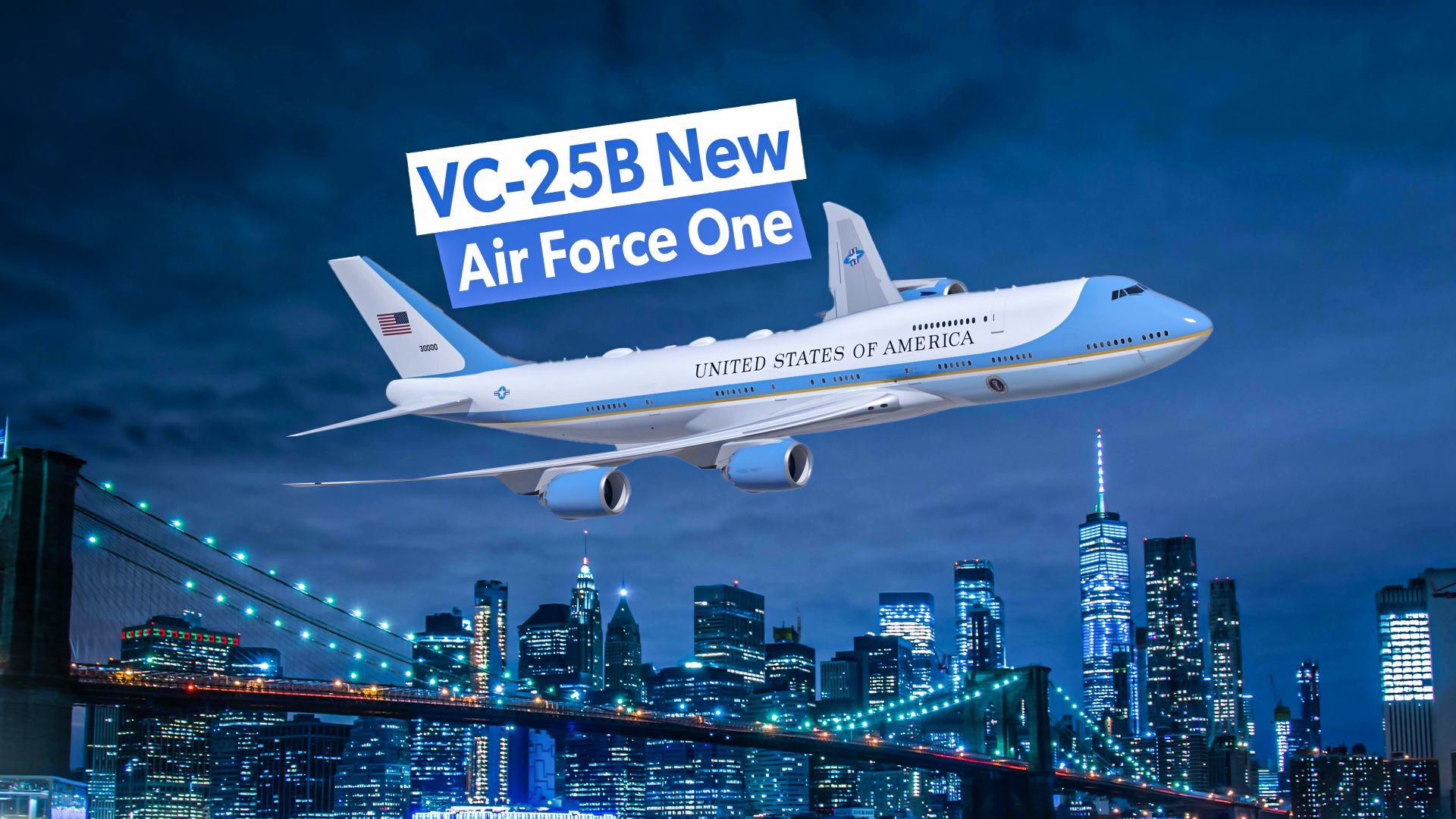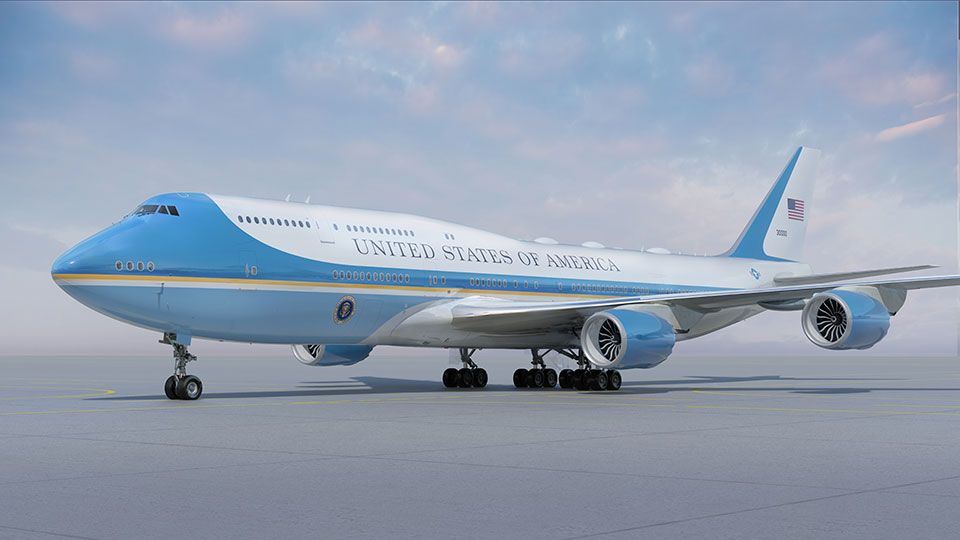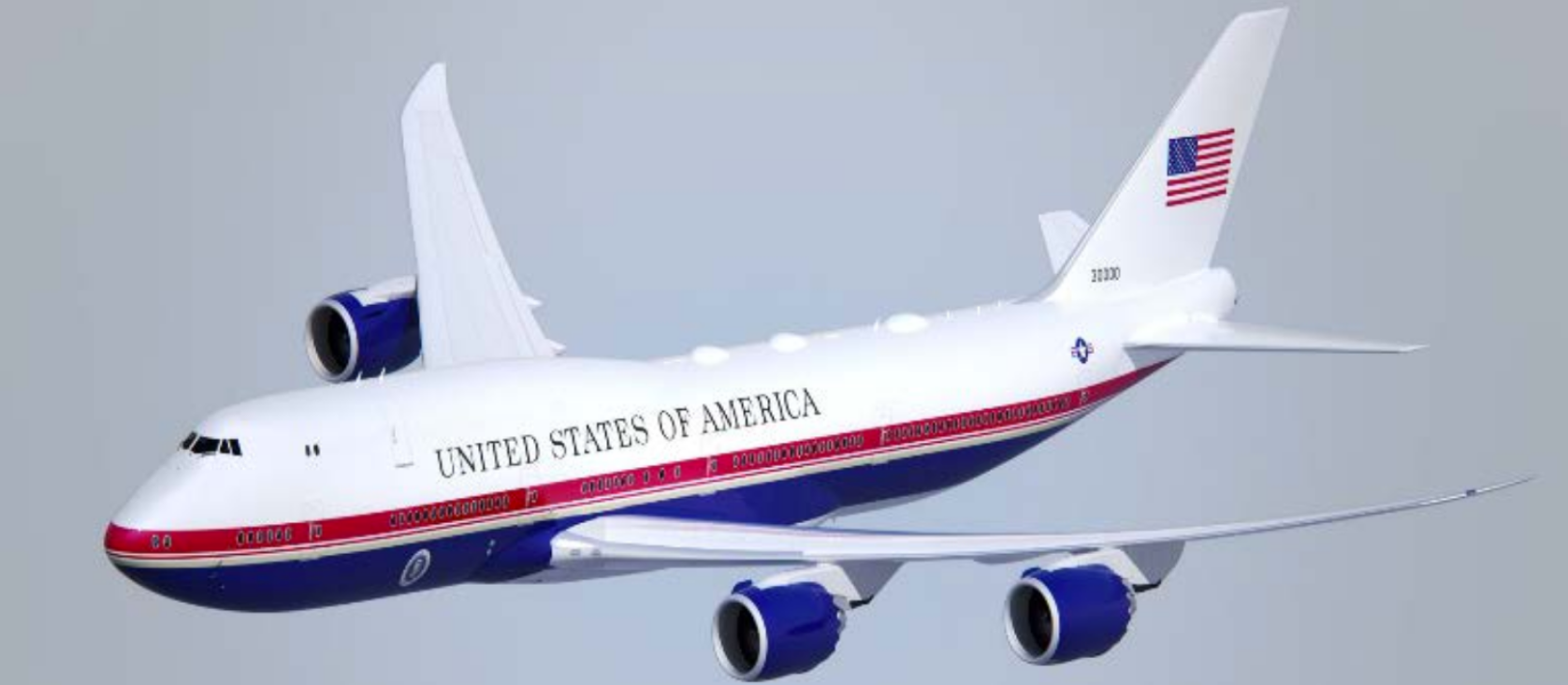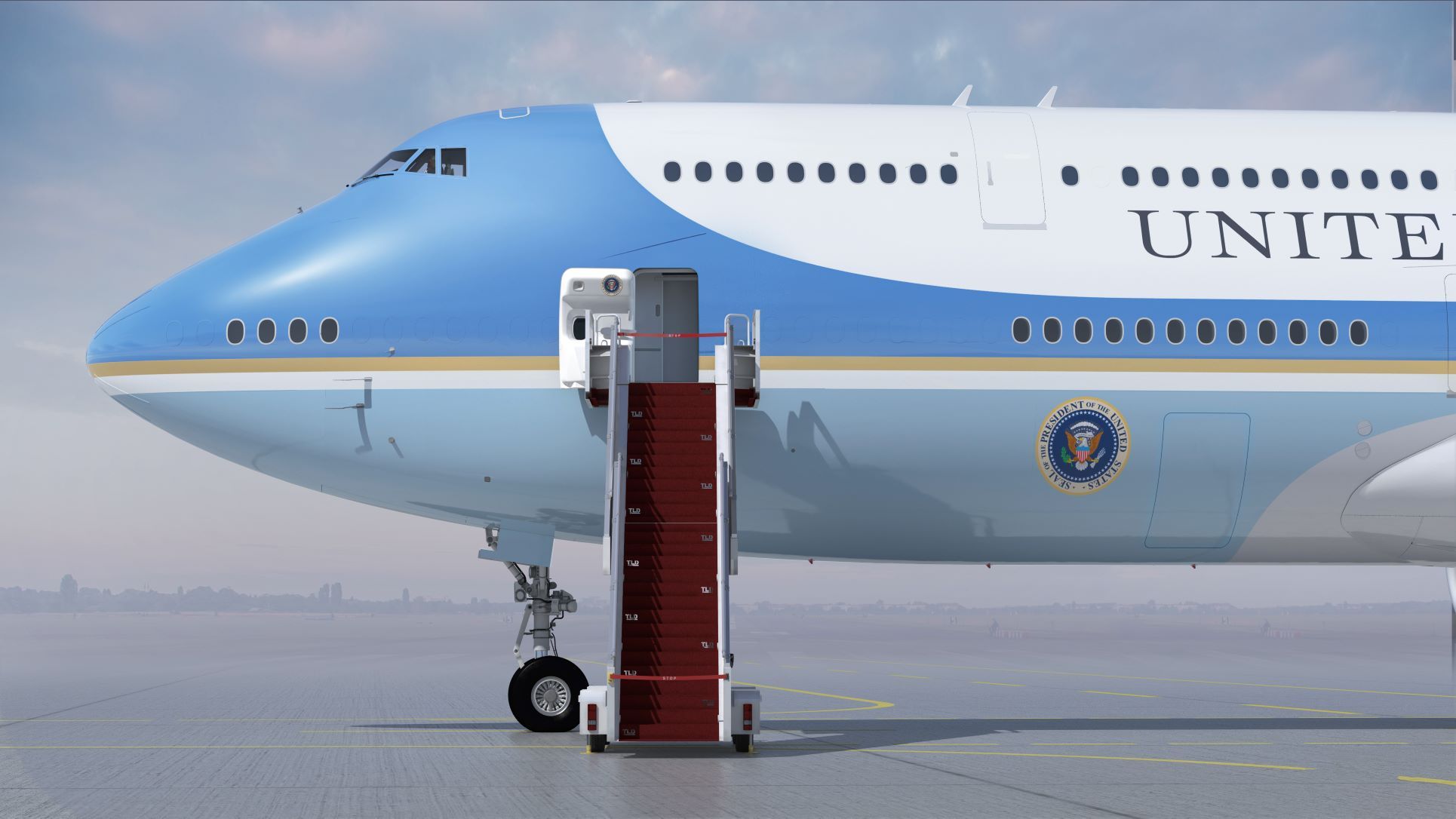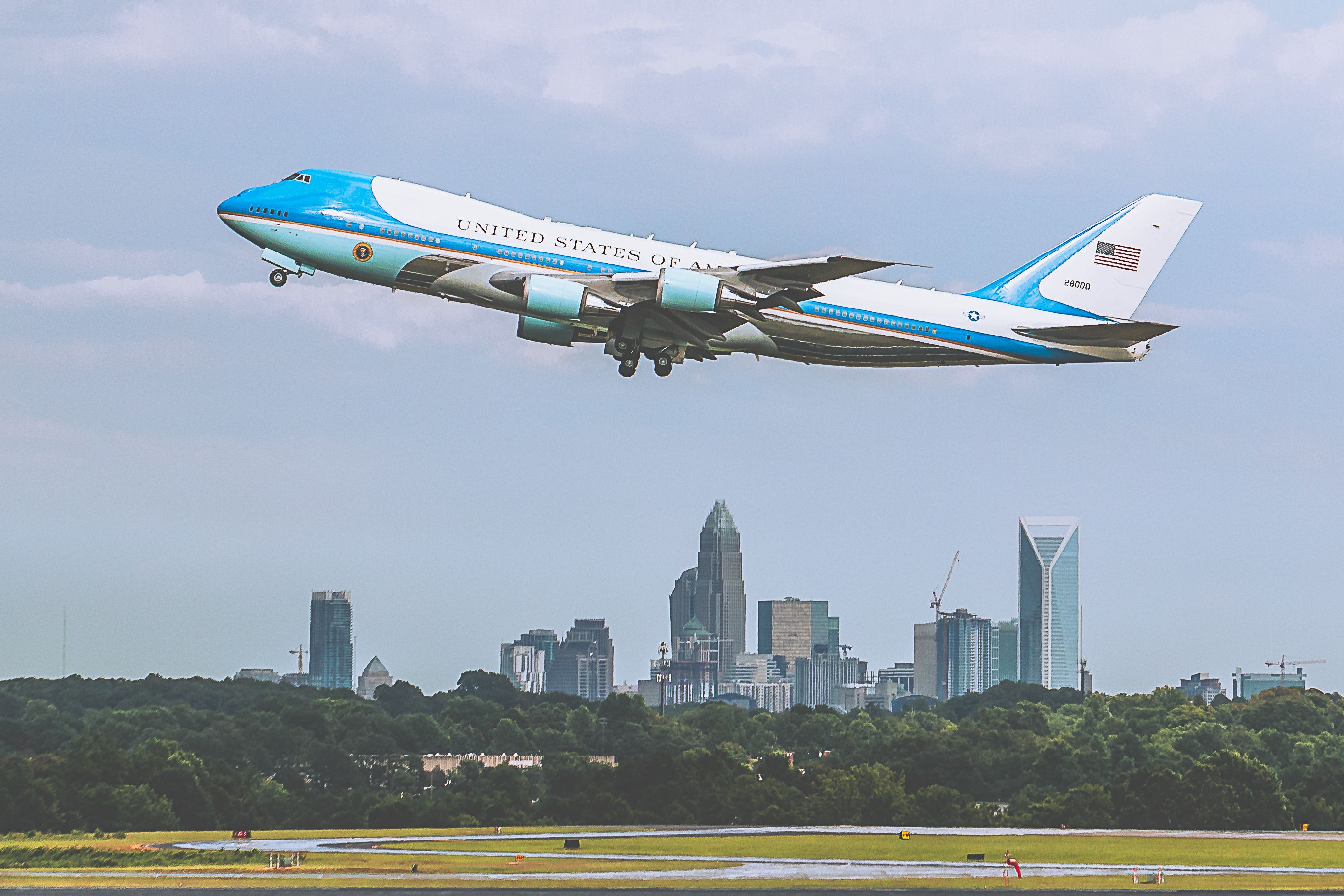The two Boeing 747s currently used to carry the President of the United States are set to be replaced within the next few years. The present planes are heavily modified Boeing 747-200 aircraft designated VC-25A. The type is the latest to be nominated for Presidential usage after winning a competition against McDonnell Douglas with its DC-10 for the role. They were delivered during the administration of President George H. W. Bush in 1990 and have been flown by all five subsequent US Presidents.
Citing “capability gaps, rising maintenance costs, and parts obsolescence,” the US Air Force ordered two of the newest Queen of the Skies models, the Boeing 747-8i (intercontinental) jumbo jets, to replace the final two Boeing 747-200s to roll off the assembly line in Everett, Washington.
A complete overhaul
The two airframes selected for the program have never flown for a commercial airline. They were initially built for Transaero, a Russian airline, which filed for bankruptcy before the aircraft could be delivered, leading to the jumbo jets being stored in California. As the latest models with no significant service history, they became the ideal proposal when the US Air Force came looking for a replacement for its aging 747-200s.
The planes are being modified for the new role at a Boeing facility in Texas. Due to national security reasons, details of the overhaul are being kept secret. However, based on published documents and publicly available information, there are several upgrades expected.
As a baseline, the latest model has several distinct advantages over its predecessor in terms of performance, with significantly reduced consumption and 1,000 nautical miles of additional range:
|
VC25A (Boeing 747-200) |
VC25B (Boeing 747-8) |
|
|---|---|---|
|
Range |
6,735 NM |
7,730 NM |
|
Cruise speed |
0.84 Mach |
0.855 Mach |
|
Maximum takeoff weight |
833,000l b |
987,000 lb |
|
Wingspan |
195 ft 8 in |
224 ft 5 in |
|
Length |
231 ft 10 in |
250 ft 2 in |
Photo: Boeing
The modification process is already well underway, and Boeing is currently hiring positions for the program, including a structure mechanic and manufacturing line manager at its San Antonio facility.
What is going to be inside?
Based on information from Boeing, the new aircraft will feature updated iterations of several critical features of its predecessor. There are several main objectives the plane must accomplish uncompromisingly. Deliver a secure command center for executive operations, keep the aircraft aloft indefinitely via air-to-air refueling, and be able to land at airports worldwide with minimal to nonexistent facilities thanks to a self-contained baggage loader and front and aft airstairs.
Within each jet is over 4,000 square feet of interior floor space, which allows for a large assortment of available workstations. According to Boeing, these are some of the attributes of the current fleet, which will presumably transfer over to the next-generation models.
- A conference and dining room for meetings.
- A private suite for the President, the First Lady, and any accompanying family members.
- There is a large office area for senior staff members.
- A second office is converted into a fully-staffed medical facility when necessary.
- Work and rest areas for the presidential staff, media representatives, and Air Force crews.
- Two onboard galleys that can provide 100 meals in one sitting.
- Secured communications across radio and satellite frequencies.
Photo: Boeing
The aircraft’s traditional livery was set to be refreshed when former US President Donald Trump supported a new design with a darker paint scheme. The current administration later reversed the plan after finding the darker blue color would require additional expensive testing.
The current design, announced in March last year, features several incremental changes from the original Jackie Kennedy and Raymond Loewy (whose other clients included Coca-Cola, Exxon, and the US Postal Service) design. The finalized incoming VC-25B livery has three primary differences from the current VC-25A livery:
- The light blue is a “slightly deeper, more modern tone” than VC-25A’s robin’s egg blue.
- The VC-25B engines will use the darker blue from the cockpit area instead of the robin’s egg blue.
- There is no polished metal section on the VC-25B, as modern commercial aircraft skin alloys don’t allow for it.
When are they going to be delivered?
The first of the two aircraft was initially predicted to begin test flights in April 2024, which was later moved to the end of the present year. The Air Force Spokesperson Daryl Mayer previously outlined the initial steps of the process:
“The first phase of aircraft modification involves cutting out large skin and structure areas in both the forward and aft lower lobes of the aircraft and then installing two newly manufactured superpanels. The superpanels contain structural upgrades and cutouts for the VC-25B lower lobe doors including internal airstairs for mission requirements.”
Photo: Boeing
The two planes arrived at the facility in 2019 and have been undergoing work since. Upon arrival, Boeing placed a sophisticated jacking and crib mechanism under each aircraft to reduce structural stress during the conversion process. The project has faced several delays, including technical issues with interior suppliers and designs, supply chain issues, wiring design errors, and workforce shortages, that have caused its initial delivery date to be pushed back significantly.
Recently, Breaking Defense reported that the maiden flight of the new aircraft has been pushed back from November 2024 to March 2026. Boeing has faced numerous delays over the years, including major design issues and labor shortages.
The Air Force’s Air Mobility Command, in consultation with the White House Military Office, will determine when the aircraft has reached initial operational capability.
Photo: Jeremy Clodfelter | Shutterstock
This represents a delivery delay of several years from the initially intended launch date. The Air Force still projects that the two aircraft may be delivered by 2028.
Once the two current aircraft are decommissioned, it is expected that they will be loaned or donated to museums. According to AP News, one outgoing model is reportedly earmarked to be displayed permanently at the George H.W. Bush Presidential Library and Museum at Texas A&M, which also hosts a Marine One helicopter President Bush used during his time in the White House and the No. 4141 Locomotive that carried him to his final resting place.

